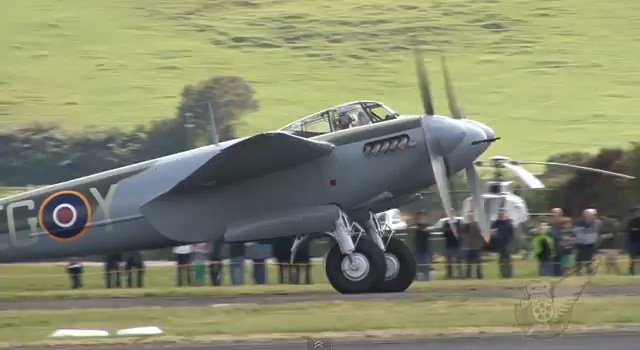The de Havilland Mosquito FB26 is a fast bomber that served in the British Royal Air Force during and after World War II. It was versatile, serving a number of roles – daytime bombing from low to medium altitudes, night bombing from high altitudes and reconnaissance. It could also be a fighter, a fighter-bomber, a pathfinder, intruder and maritime strike aircraft. It was also used by the Royal Australian Air Force, the Royal Canadian Air Force, and the United States Air Force.
It was also used by civilians. The British Overseas Airways Corporation (BOAC) transported small, high-value cargo to neutral countries.
The Mosquito was nicknamed ‘the Wooden Wonder.’ It was made almost entirely out of wood, and was the only front line aircraft so constructed. It was one of the fastest planes then in operation. It could reach a maximum speed of 366 miles per hour (318 kilometers) at 21,400 feet (6,500 meters).
It had a wingspan of 54 feet 2 inches (16.52 meters) and weighed 18,649 pounds (8,549 kilograms) on takeoff. It could carry a single passenger in the bomb bay.
This particular Mosquito Serial number KA144), or ‘Mossie’, as the Wooden Wonder was also called, is on display for the first time at Ardmore Aerodrome in Auckland, New Zealand. It was lovingly restored by Avspecs, otherwise known as Warbird Restorations.
A great number of subcontractors from New Zealand and elsewhere contributed to the task. The plane has been painted in the colors of 487 Squadron. New wings and a fuselage have been built for it, thanks to the efforts of Auckland restorer Glyn Powell. Keith Skilling and Dave Philips here take it out for a spin.
The Mosquito served from 1941 until its retirement in the 1950s. 7,781 Mosquitos were built. Of these, there are approximately 30 left.
